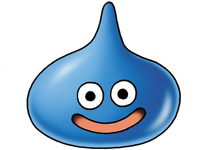Rating of
2/5
On Handheld Esoterica and Suppressed Memories
Nelson Schneider - wrote on 01/02/20
“Super Mario Land 2: 6 Golden Coins” (“SML2”) is a game I haven’t really thought about in nearly 30 years. I was 11 or 12 years old when this thing was released for the original Game Boy Brick in 1992, and like most handheld games, I found it to be enjoyable enough when played on the Super Game Boy, but ultimately forgettable. Having just recently experienced the utter disappointment of “Super Mario Maker 2’s” Story Mode, I decided to try to get a dose of ‘Mario’ from a time when the series was ‘better.’ Having played the absolute snot out of “Super Mario World” in the decades since its release, I decided instead to re-experience one of THE definitive ‘Mario’ game’s contemporaries through the magic of emulation. Looking at “SML2” from the wise perspective of someone who has written hundreds of full-length game reviews was an eye-opening experience, and goes a long way in explaining why “SML2” never really lodged itself in my memory the way “Super Mario World” did.
Presentation
As a Game Boy Brick title, “SML2” naturally leaves a lot to be desired. Even with Super Game Boy enhancements turned on, the game’s color palette is shockingly bad, so much so that 1-up mushrooms needed to be replaced with 1-up hearts, since it was impossible to differentiate a green ‘shroom from a regular orange Super Mushroom on the Game Boy. Further, Fiery Mario is no longer orange to designate his Fire Flower-powered ability to hurl fireballs, but instead sticks a feather in his cap (and probably calls it ‘macaroni’) in order to give players some non-color-based visual indication that the power-up is active.
Aside from the egregiously limited color palette, “SML2” also features a bizarre stable of enemies and stage designs that don’t really feel very ‘Mario’-like at all. The only recurring enemies from previous ‘Mario’ titles are Goombas, Koopa Troopas, and Bullet Bills, while none of the enemies who make their debut appearance in “SML2” have appeared in subsequent titles.
While it is refreshing not to see Bowser and/or his Too Many Kids in the villainous role, most of the bosses are completely inscrutable and make absolutely no sense. The Three Little Pigs? Really?!
Audiowise, “SML2” is equally tepid. The Game Boy Brick, as an 8-bit device, was incapable of producing sound anywhere near the quality of its contemporary SNES, thus the soundtrack in “SML2” is more akin to the NES’s chiptunes. On one hand, there’s next to no remixing in “SML2,” which is good for those who value originality. On the other hand, the only truly memorable piece of music in this game is the annoying tune that plays during the crane machine bonus game at the end of a stage.
Technically, “SML2” is highly limited in its ambitions by, as mentioned moments ago, the fact that it is a Game Boy Brick title. The aspect ratio of the Game Boy’s tiny screen makes everything in “SML2” feel incredibly cramped, and the game will even pan the camera around if the player holds a d-pad input up or down. Even worse, simple things like scrolling (in a friggin’ side-scrolling platformer!) feel jittery and, when played on a huge modern flat-screen, could almost induce motion sickness in susceptible people. Even the user interface in “SML2” feels weird and backward, placing important information, like the stage time, Mario’s coin count, and some other things whose purpose I can’t quite recall at the bottom of the screen instead of the top.
Story
Announcer: The wicked impostor, Wario, has cast an evil spell over MarioLand!
Wario (swinging a hypnotist’s pendulum): Obey me, Wario! I am your master, Mario is your enemy!
Announcer: It’s Mario’s biggest adventure yet!
Wario: Don’t let Mario get the Six Golden Coins! Don’t let Mario reach the palace! Obey Wario, destroy Mario!
At least that’s how I remember the 1992 commercial for “SML2” as it ran on American network TV. But how much of that narrative is actually in the game itself? NONE! Players are simply plopped onto a world map with no explanation of what to do or where to start.
What is fairly novel for a game of this age is that it is completely non-linear. Each of the game’s various zones are available to explore from the get-go, with the only requirement for completing the game being the gathering of the titular 6 Golden Coins, which unlocks the door to Mario’s (?) palace, where Wario awaits.
The fact that none of the narrative framework is contained within the game itself, but must be gleaned from TV commercials or the instruction manual is a fairly major shortcoming. However, the biggest shortcoming in “SML2” is just how SHORT is it. There are less than 30 individual stages, and the game can be completely scoured in far less than 5 hours. Granted, this was a handheld release, which were always assumed to be shorter than a full-console release, and were priced accordingly. But, wow! It seems the reason my memories of “SML2” from back in the ‘90s were so cloudy is because the entire experience was over in the blink of an eye. Sure, there are some secret stages to be found, but they ultimately offer nothing of interest, especially when compared to the more comprehensive set of secret stages in “Super Mario World.”
Gameplay
“SML2” is, at its core, a fairly basic ‘Mario’ 2D platformer. Players are tasked with guiding the tubby plumber through 2D side-scrolling stages, picking-up power-ups that make him more durable and more powerful. Super Mario and Fiery Mario can both perform a block-breaking spin-jump, while “SML2’s” unique power-up, the Super Carrot, allows Rabbit Mario to hover in the air almost indefinitely by flapping his ears.
Mario will gather coins in his adventures through a number of zones. Instead of gaining an extra life for each 100 coins grabbed, Mario can now hold 999 coins and must visit a casino to gamble them for 1-ups or other prizes. Each of the game’s scant few stages also includes a bonus bell above the stage exit. If Mario rings the bell as he completes a stage, he gets to play a crane-claw minigame, which also provides opportunities to earn extra lives and power-ups.
“SML2” is not only painfully short, but 99% of the game is painfully easy. I quite quickly found myself with 99 extra lives in reserve and only died about a half-dozen times through the game’s stages and boss battles. However, that last 1% of the game that isn’t easy is tooth-gnashingly frustrating and overly difficult. After plowing through the game and curb-stomping the bosses, the trip through the palace to the ultimate confrontation with a multi-part Wario boss battle – all without a single mid-stage checkpoint – feels incredibly unfair. This difficulty spike saw me suddenly dying dozens of times in the very last leg of the game, which is an incredibly poor way of padding out a super-short title’s length. Perhaps worst of all, however, is that, upon running out of extra lives and continuing, all 6 Golden Coins, which are required to unlock the palace gate, return to the custody of their original bosses, thus forcing players into a bunch more repetition in order to get another crack at the god-awful finale.
Overall
Far from being an almost-forgotten trip back to the Golden Age of Nintendo, “Super Mario Land 2: 6 Golden Coins” is an object lesson in why handheld games are generally not as well-remembered or appreciated as their full-fledged console counterparts. Between its ridiculously short length, abysmal technical compromises mandated by the Game Boy hardware itself, and the sudden massive difficulty spike at the very end, I’ll be very happy to re-submerge this disaster in my subconscious mind and never actively think about it again.
Presentation: 2.5/5
Story: 1/5
Gameplay: 2.5/5
Overall (not an average): 2/5
Recent Comments
Nelson Schneider - wrote on 01/24/20 at 12:03 AM CT
Super Mario Land 2: 6 Golden Coins Review comment
Somebody's bias is showing here, but it's not mine.
dbarry_22 - wrote on 01/06/20 at 12:08 PM CT
Super Mario Land 2: 6 Golden Coins Review comment
Sigh. So I guess your complaints under "presentation" represent ALL original Game Boy games? You do realize that this game came out in 1992 and the Super Game Boy came out in 1994 right? That means when this game was made there was no consideration whatsoever about a color palette. And then complaining about the sound not being able to produce what a SNES could is like saying all Switch games are inferior to PS4 games because it can't produce the same graphics. Wow talk about superficial …






